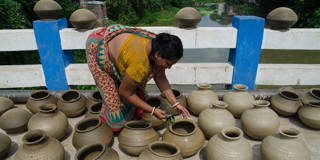India’s self-help groups have advanced gender equality and contributed to a sharp decline in poverty over the past 15 years. The task now is to replicate their success elsewhere and apply their lessons to other barriers to women’s advancement.
SEATTLE – As we embark on a new year, I have been reflecting on “resolutions,” and more specifically, what it takes for an individual or a society to be resolute in a world of endless challenges and obstacles. Throughout my career, I have seen many examples of triumph against the odds – extraordinary accomplishments that often begin with a small group of individuals seeking to solve a problem. In the best cases, local communities, government, and the private sector align and invest in programs and policies that create more opportunities for these groups to flourish.

SEATTLE – As we embark on a new year, I have been reflecting on “resolutions,” and more specifically, what it takes for an individual or a society to be resolute in a world of endless challenges and obstacles. Throughout my career, I have seen many examples of triumph against the odds – extraordinary accomplishments that often begin with a small group of individuals seeking to solve a problem. In the best cases, local communities, government, and the private sector align and invest in programs and policies that create more opportunities for these groups to flourish.